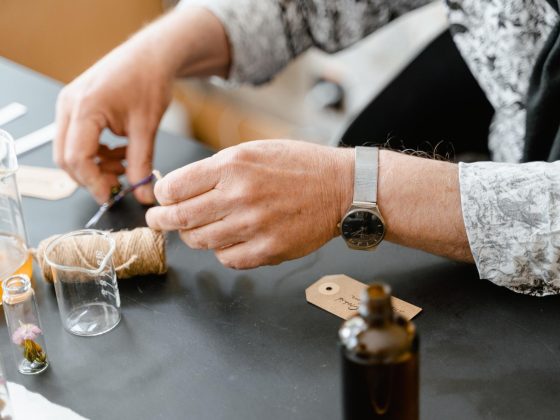A look into the ingredients used in perfumery and the process of its alchemy!
Ingredients. The ingredients used in perfumery can be divided into two main categories: naturals and synthetics.
Naturals. These are substances obtained from plants, animals, and sometimes minerals. This category includes essential oils (like rose or lavender oil), absolutes (like jasmine absolute), resins (like frankincense), animal extracts (like musk or ambergris), and others. These materials are typically obtained through processes such as steam distillation, solvent extraction, or enfleurage.
Synthetics. These are man-made ingredients, created in a lab. Some synthetics mimic natural scents (like synthetic vanilla, or vanillin), while others represent novel olfactive experiences that don’t exist in nature (like Calone, a synthetic compound that imparts a ‘marine’ scent). Synthetics have greatly expanded the perfumer’s palette, allowing for a wider range of scents that also have greater stability and longevity.
In addition to these, perfumes often contain water and alcohol, which serve as carriers for the scent molecules.
The Process.
1. Concept/Design. The creation of a perfume begins with a concept. This could be an emotion, a place, a person, an abstract idea—anything that the perfumer or the brand wishes to evoke through the scent.
2. Formulation. The perfumer then begins the process of translating this concept into a perfume. They will select various ingredients from their palette that they believe will work together to evoke the desired concept. Perfumers usually work with a ‘perfume pyramid’, which includes the top notes (scents that are perceived immediately), heart notes (forming the main body of the perfume), and base notes (scents that linger the longest).
3. Blending. The ingredients are then carefully weighed and blended together. This blend, or ‘compound’, is usually mixed with alcohol, which serves as a carrier and helps diffuse the scent.
4. Maturation. The perfume is then left to mature for several weeks or even months. During this time, the different ingredients meld together, and any harsh notes soften.
5. Filtration. After maturation, the perfume is filtered to remove any solid particles.
6. Quality Control. Samples from each batch are tested to ensure they match the original formulation.
7. Bottling. Finally, the perfume is bottled and packaged, ready for distribution.
Creating a perfume requires not only a thorough understanding of the ingredients and their interactions, but also an ability to connect this understanding with the emotional, subjective experience of scent. It’s a complex process that blends science and art in equal measure.
At guzz, our mission is the celebration of human creativity, ingenuity, and expression in arts, crafts, and products. Our inspiration is the human spirit.
For partnerships, product placements, sponsorships, investments, and collaborations, you may reach us at [email protected] for further communications.












